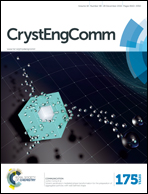Effect of Fe3+ on third-order optical nonlinearity of KDP single crystals
Abstract
A series of trace Fe3+-doped KH2PO4 single crystals were grown using the conventional temperature cooling method. The Fe3+ ion content in the as-grown crystals and the corresponding transmission spectrum were measured, respectively. With an increase of Fe3+ ion concentration, the transmittance of the crystal gradually decreases within the wavelength range of 200 nm to 370 nm. Under picosecond pulse laser irradiation, third-order nonlinear optical characteristics were systematically measured at λ = 532 nm. The existence of nonlinear absorption and nonlinear refraction was demonstrated. The results show that the nonlinear refractive index n2 is positive, indicating the presence of a self-focusing effect for the as-grown crystals. Specially, nonlinear absorption and refraction have a heavy dependence on the Fe3+ ion content and crystal directions (II and z). With increasing Fe3+ ion concentration, a significant variation has been observed with respect to the nonlinear absorption coefficient β, nonlinear refractive index n2 and third-order nonlinear susceptibility χ(3). A similar pattern for II < z has been presented for nonlinear absorption and refraction. The investigations suggest that nonlinear absorption and refraction caused by distortion of the electron cloud might be associated with the H2PO4− and (FeO4)2− groups.


 Please wait while we load your content...
Please wait while we load your content...